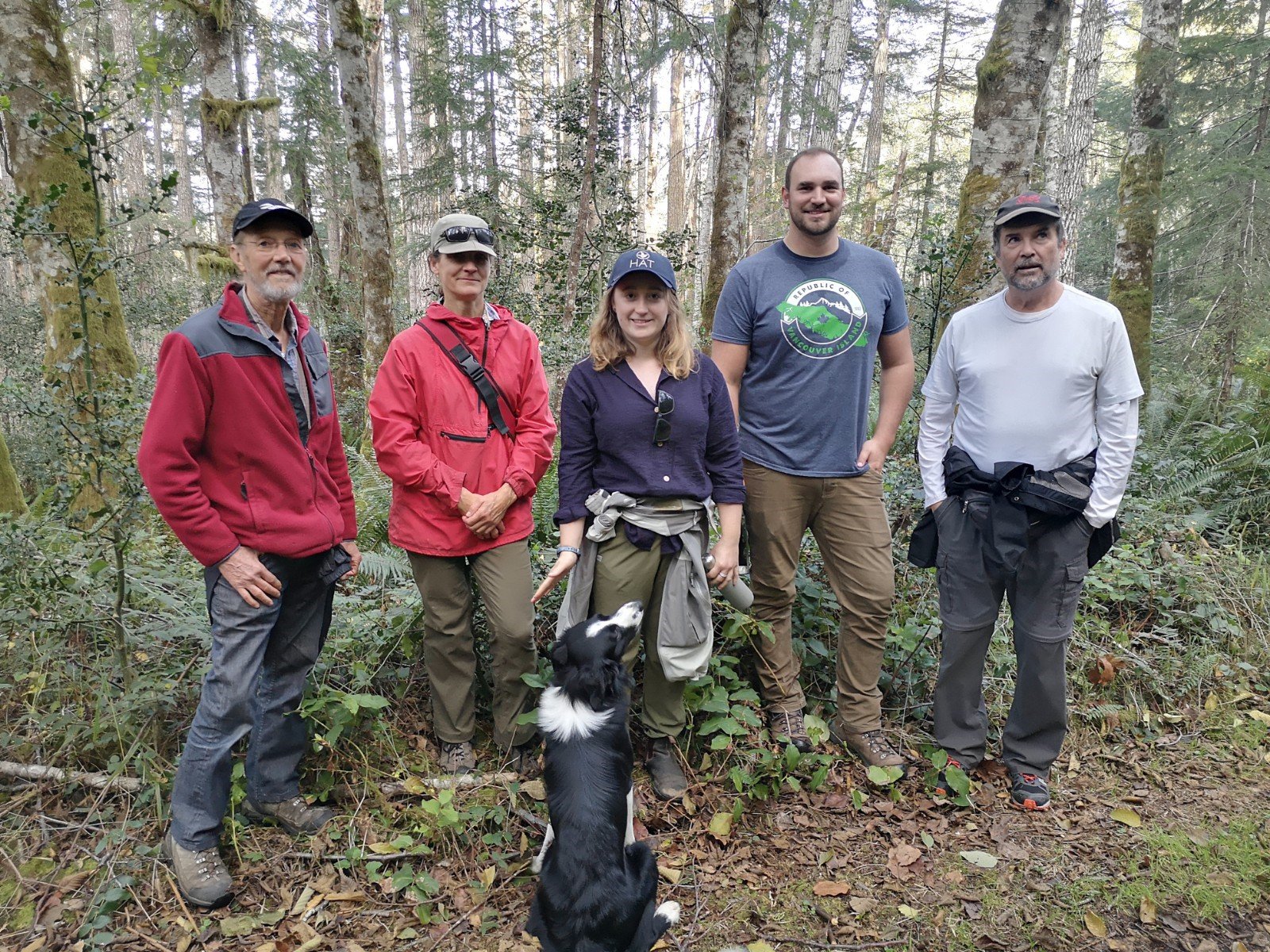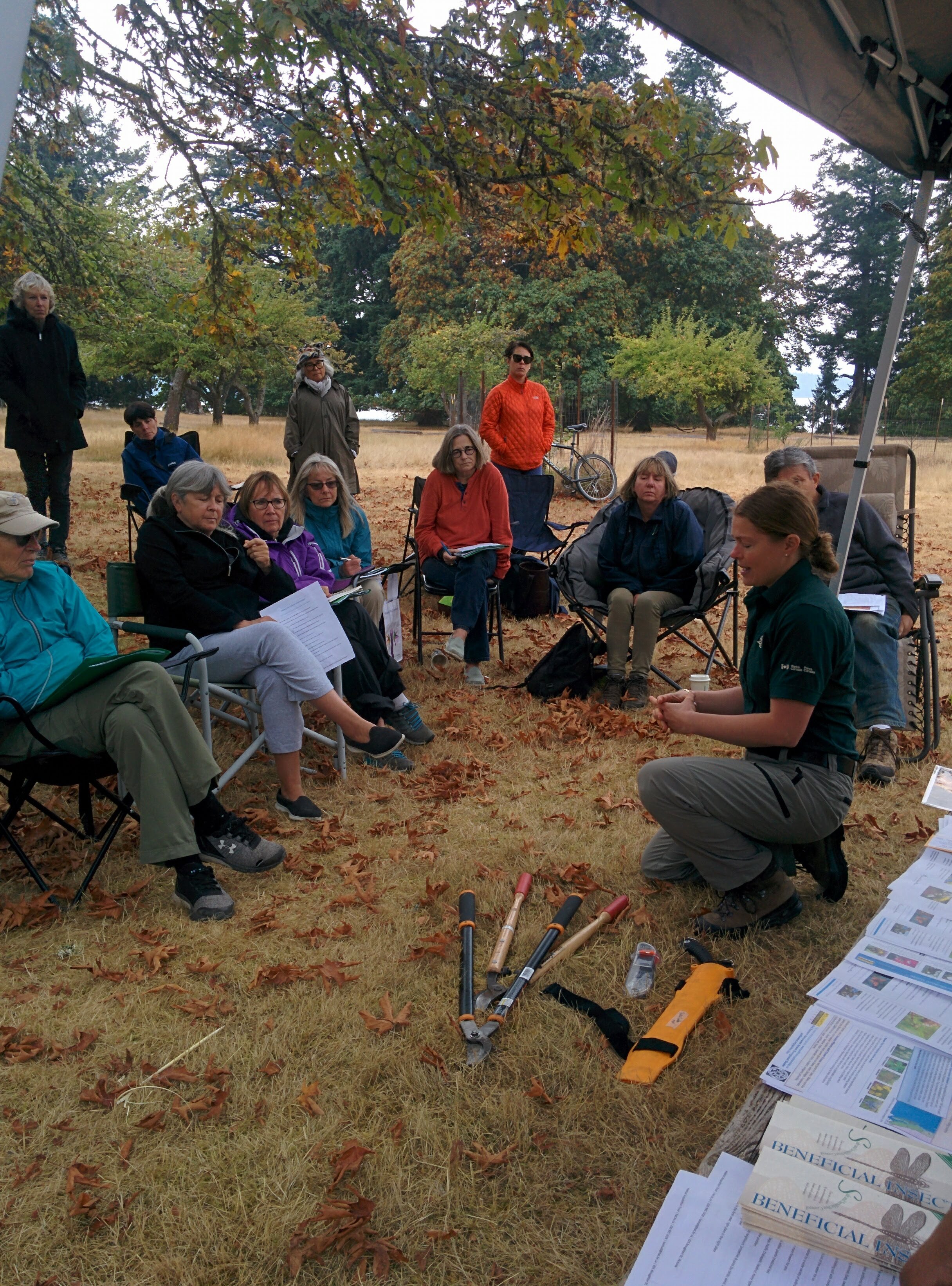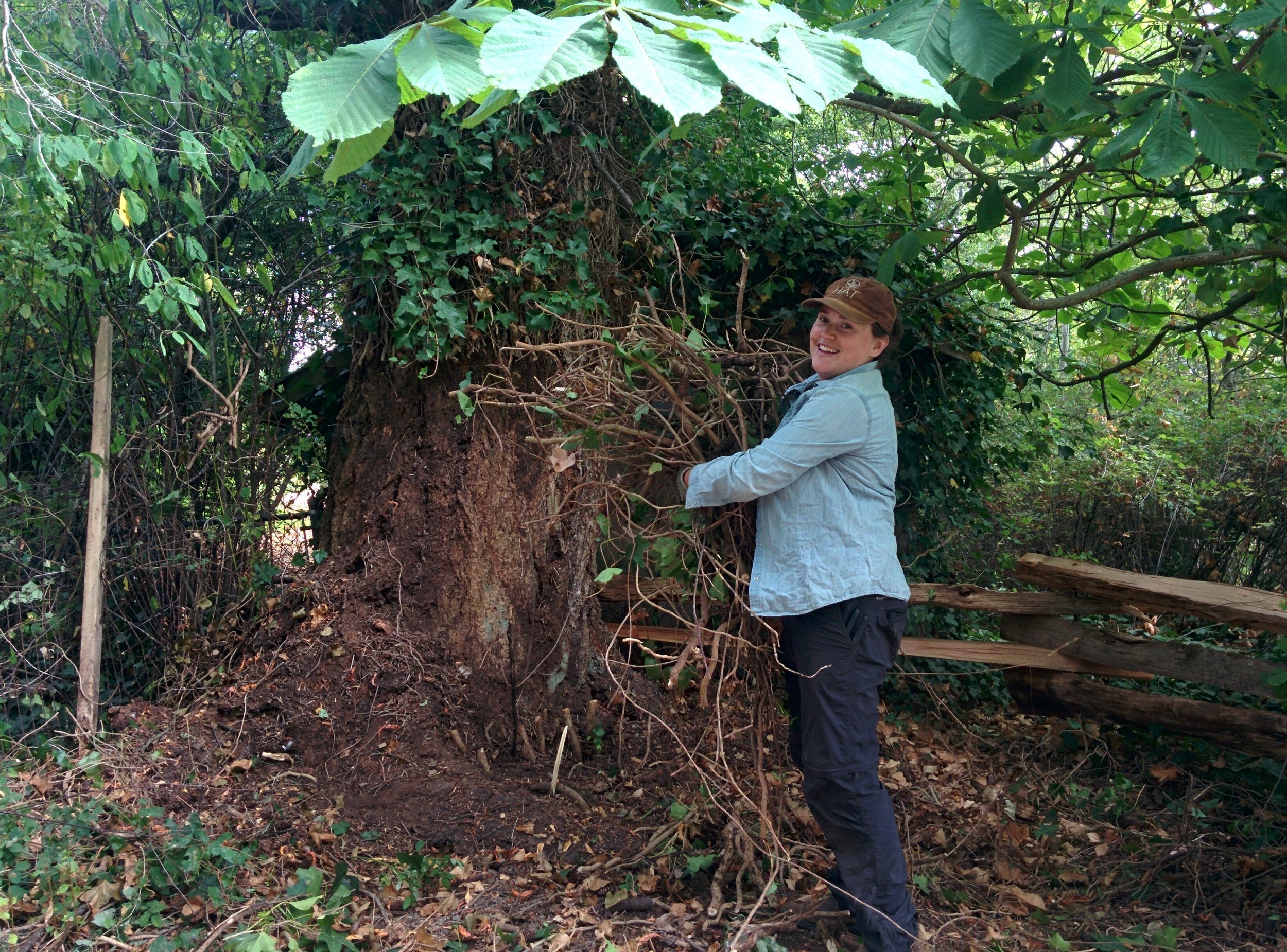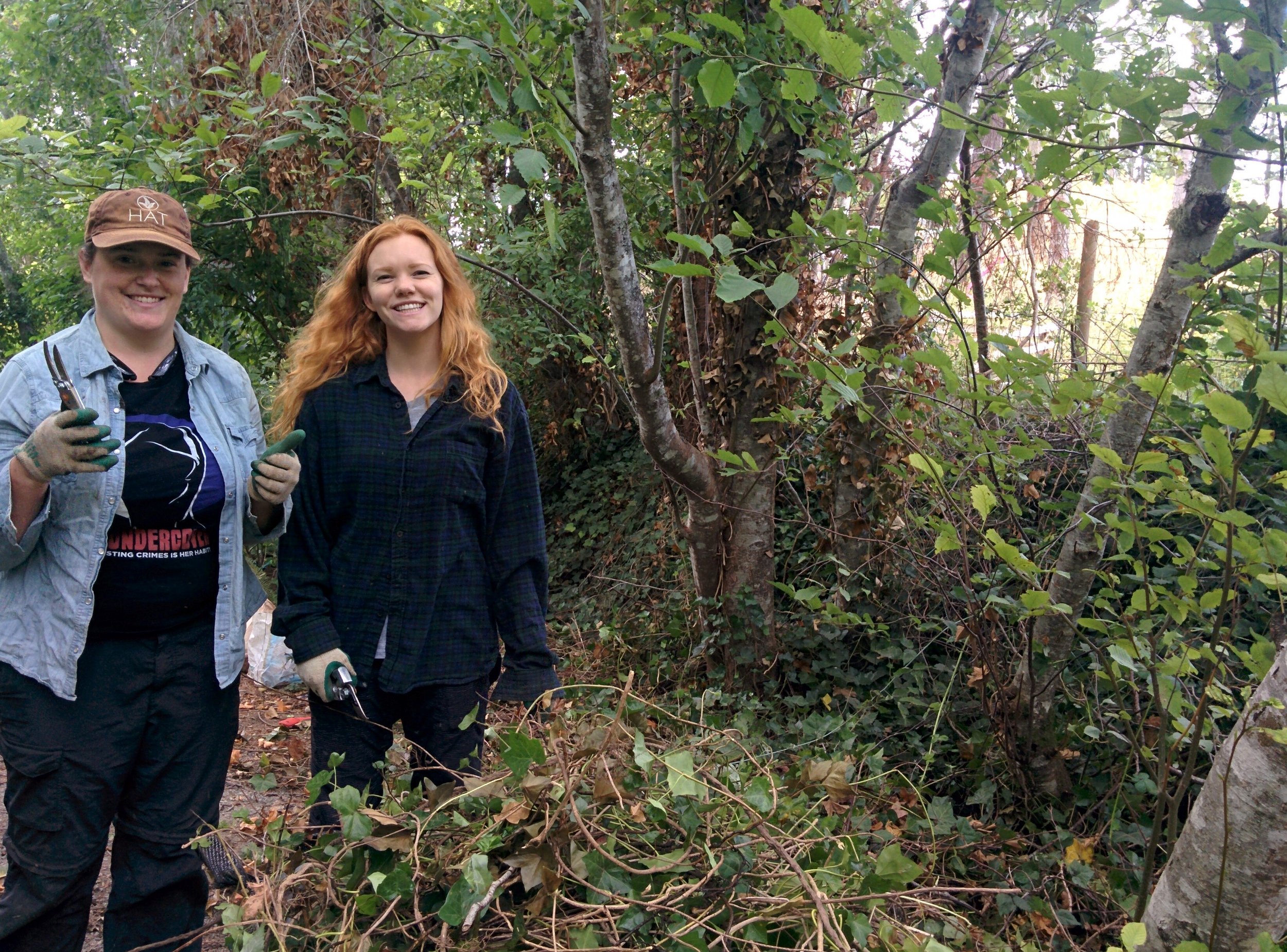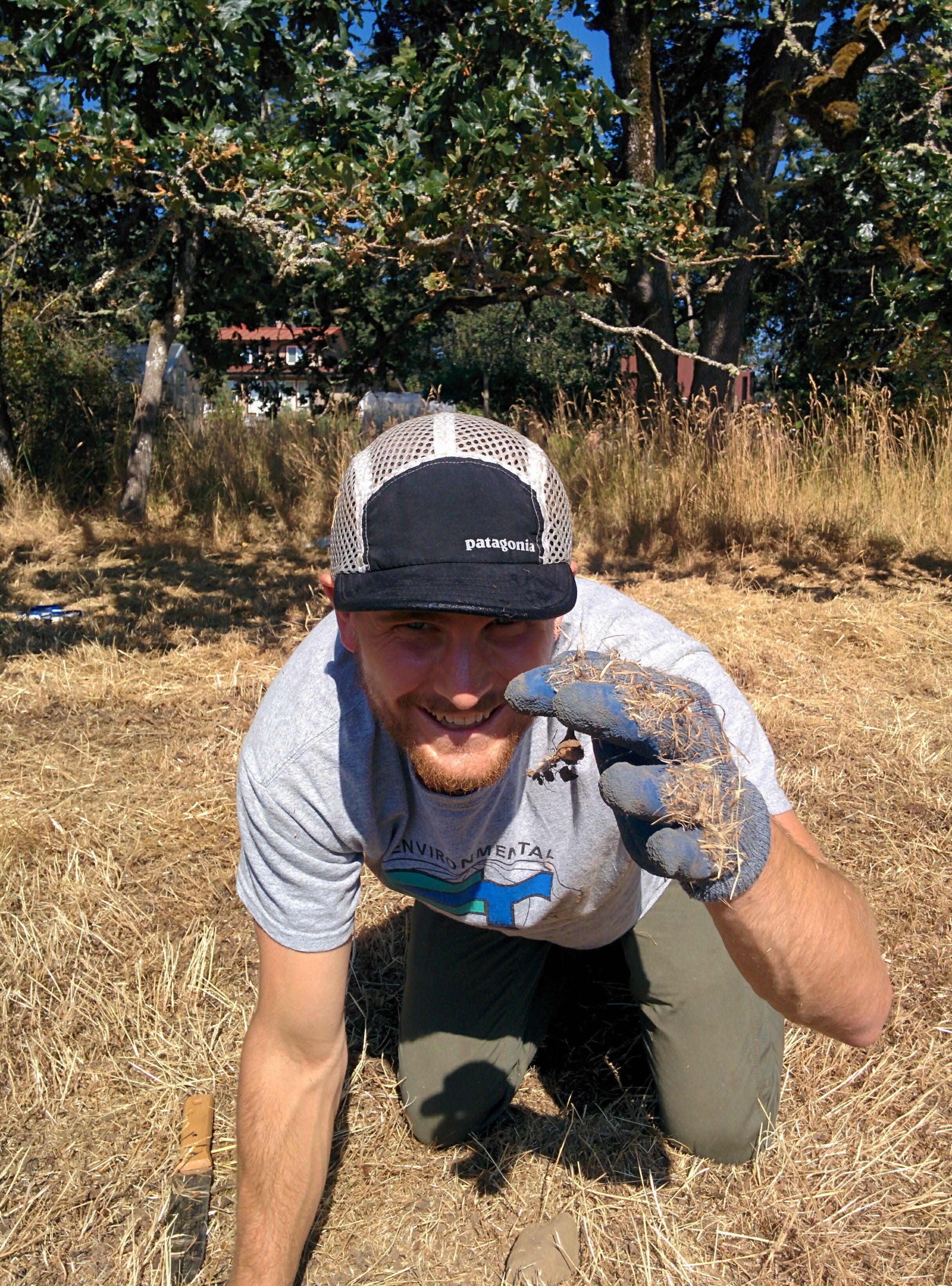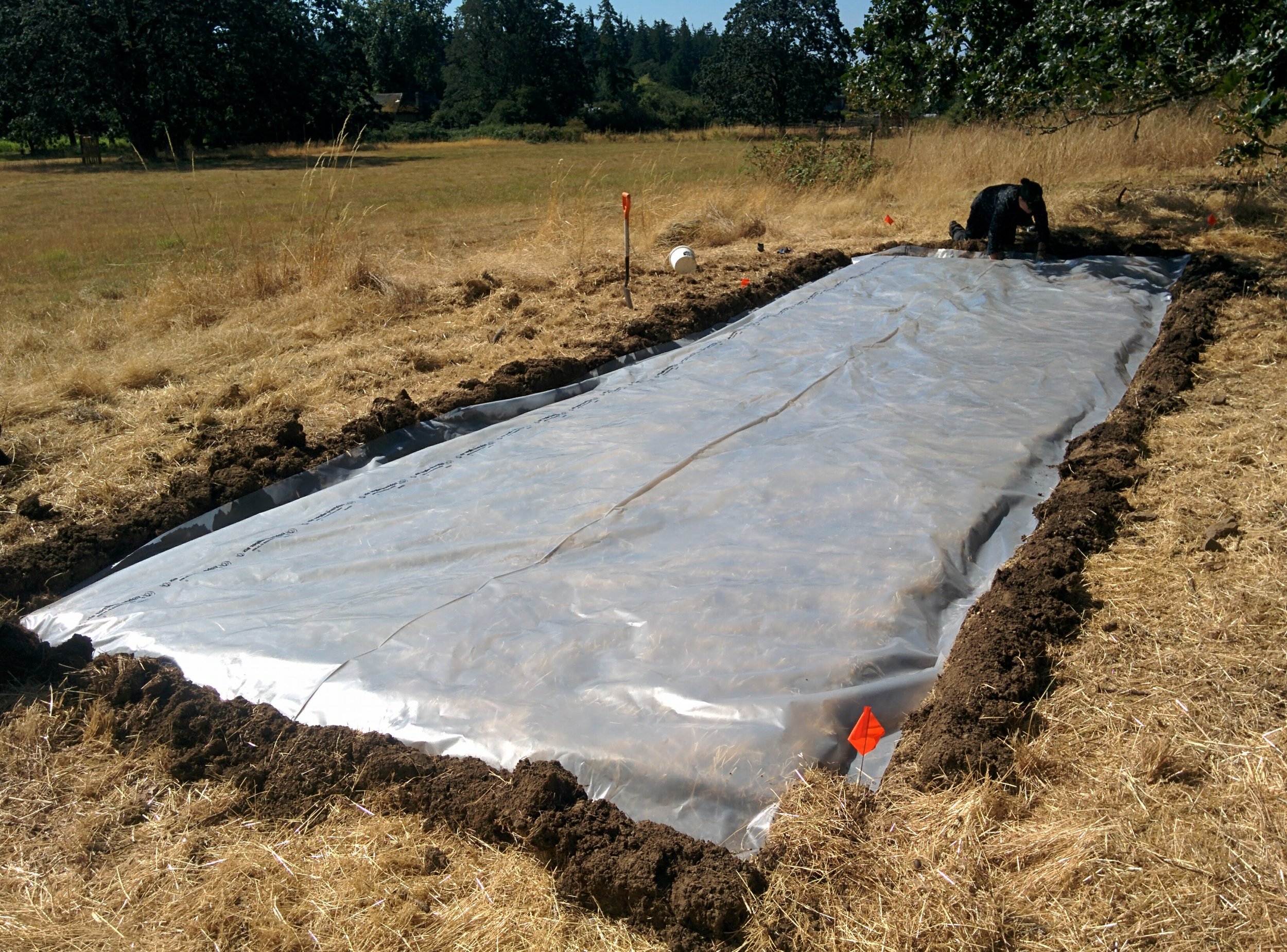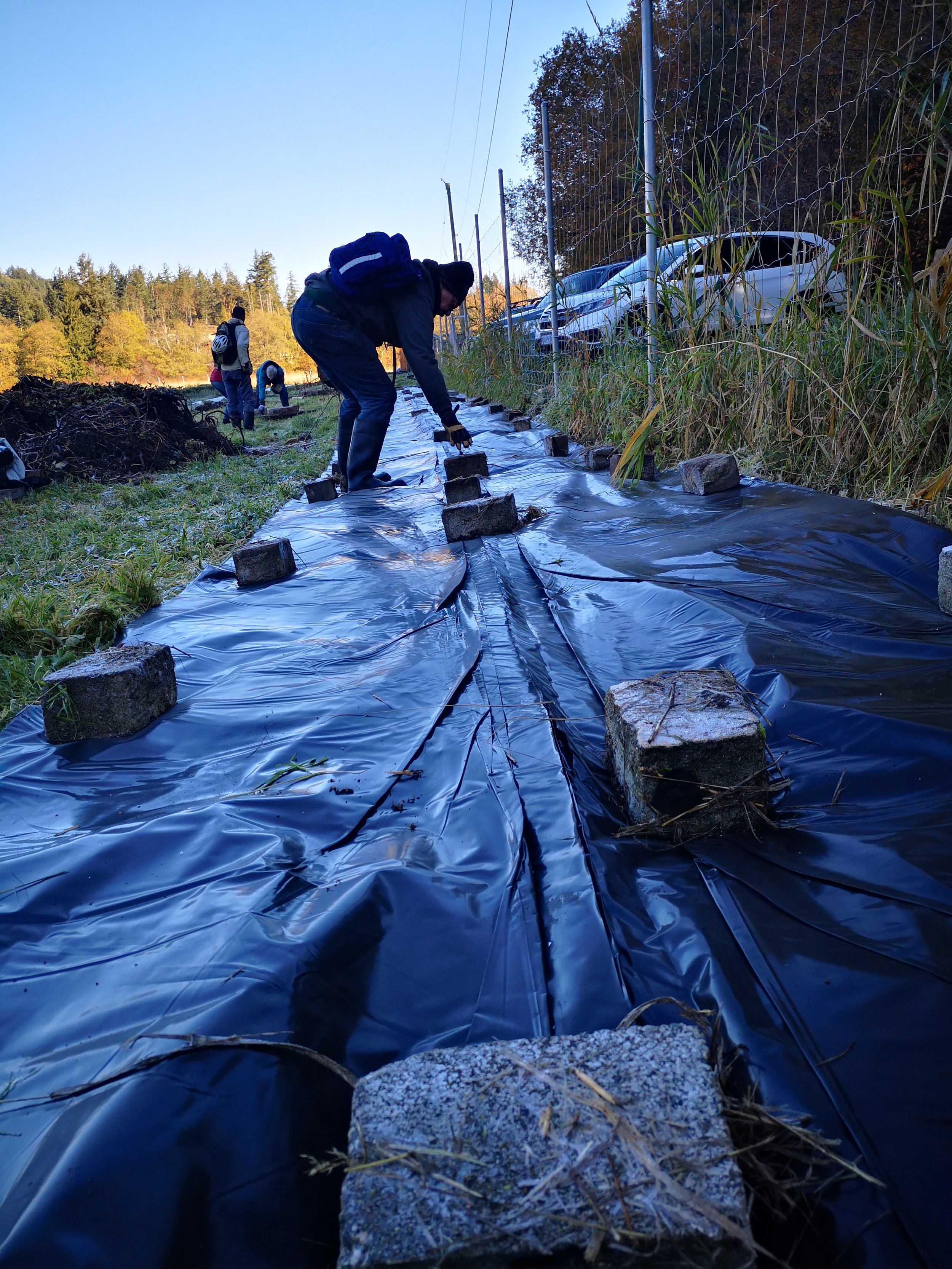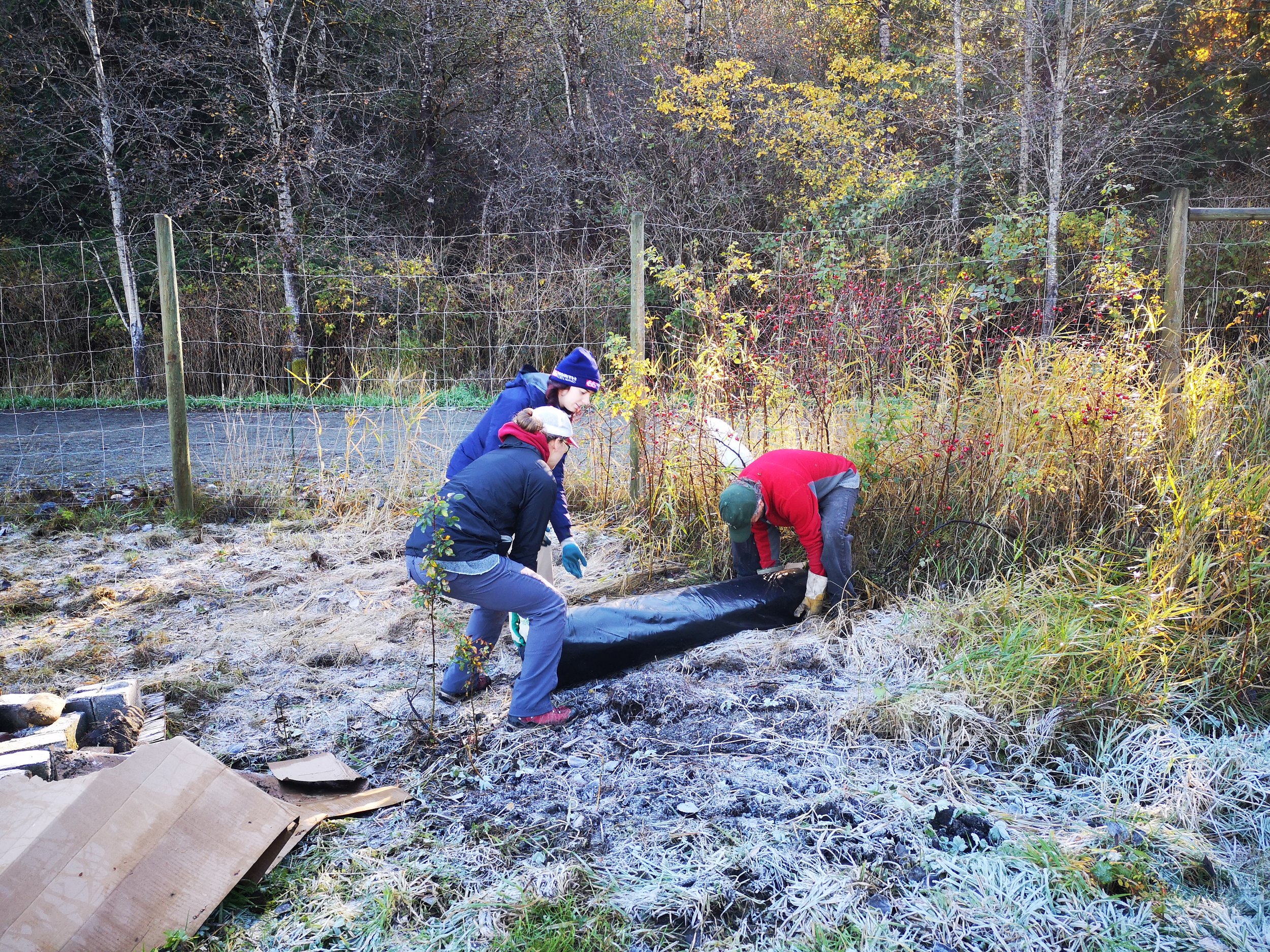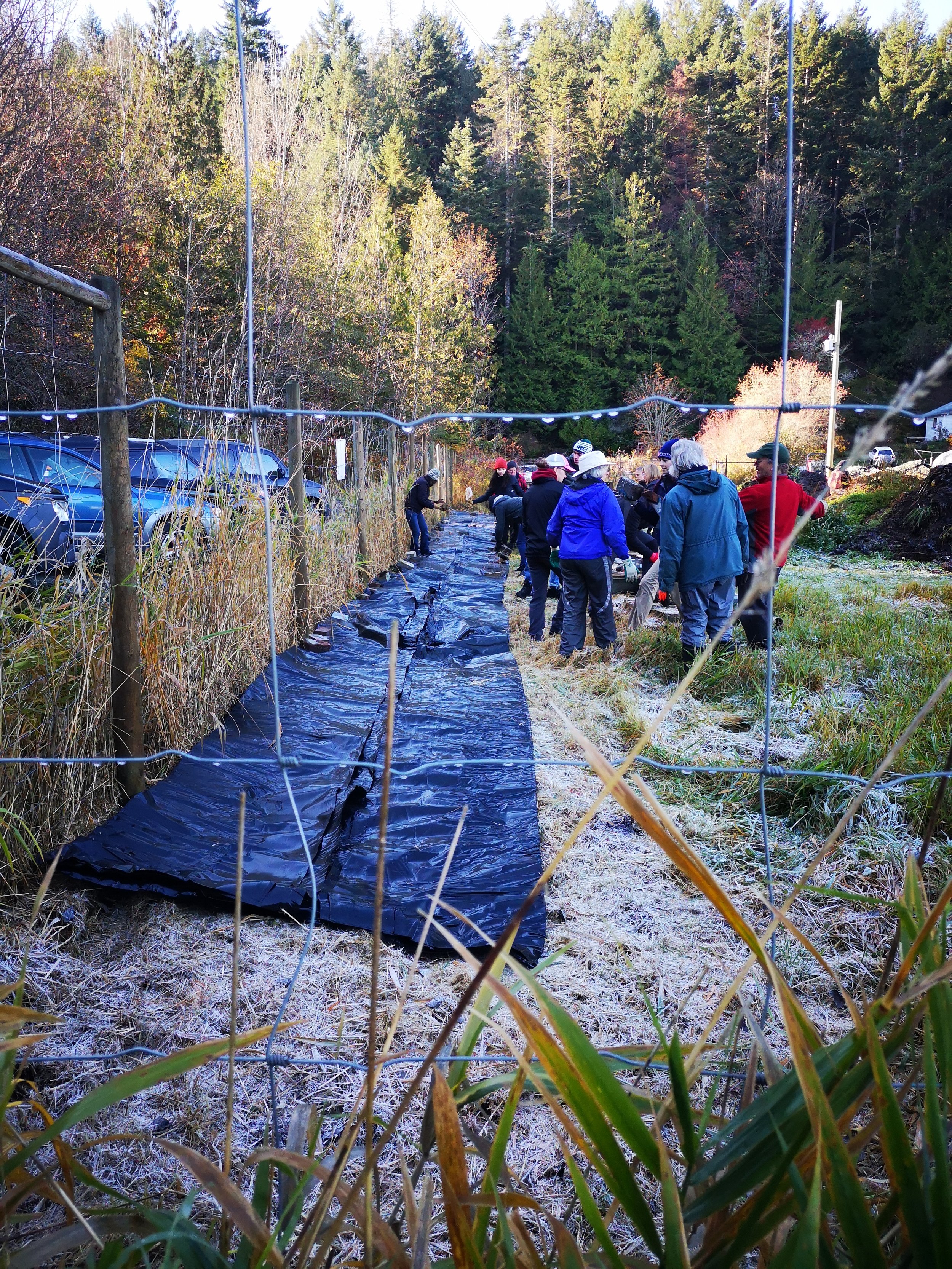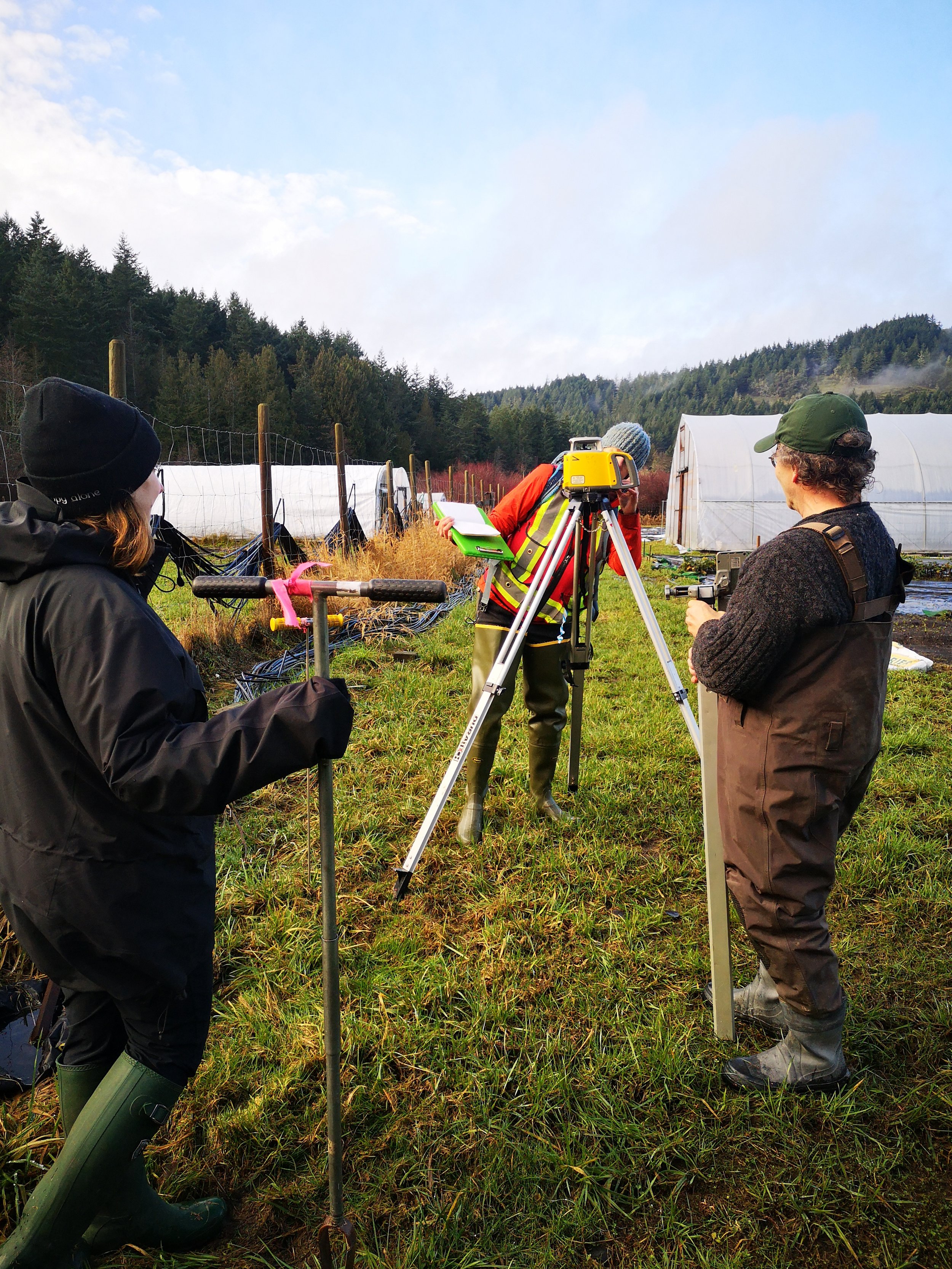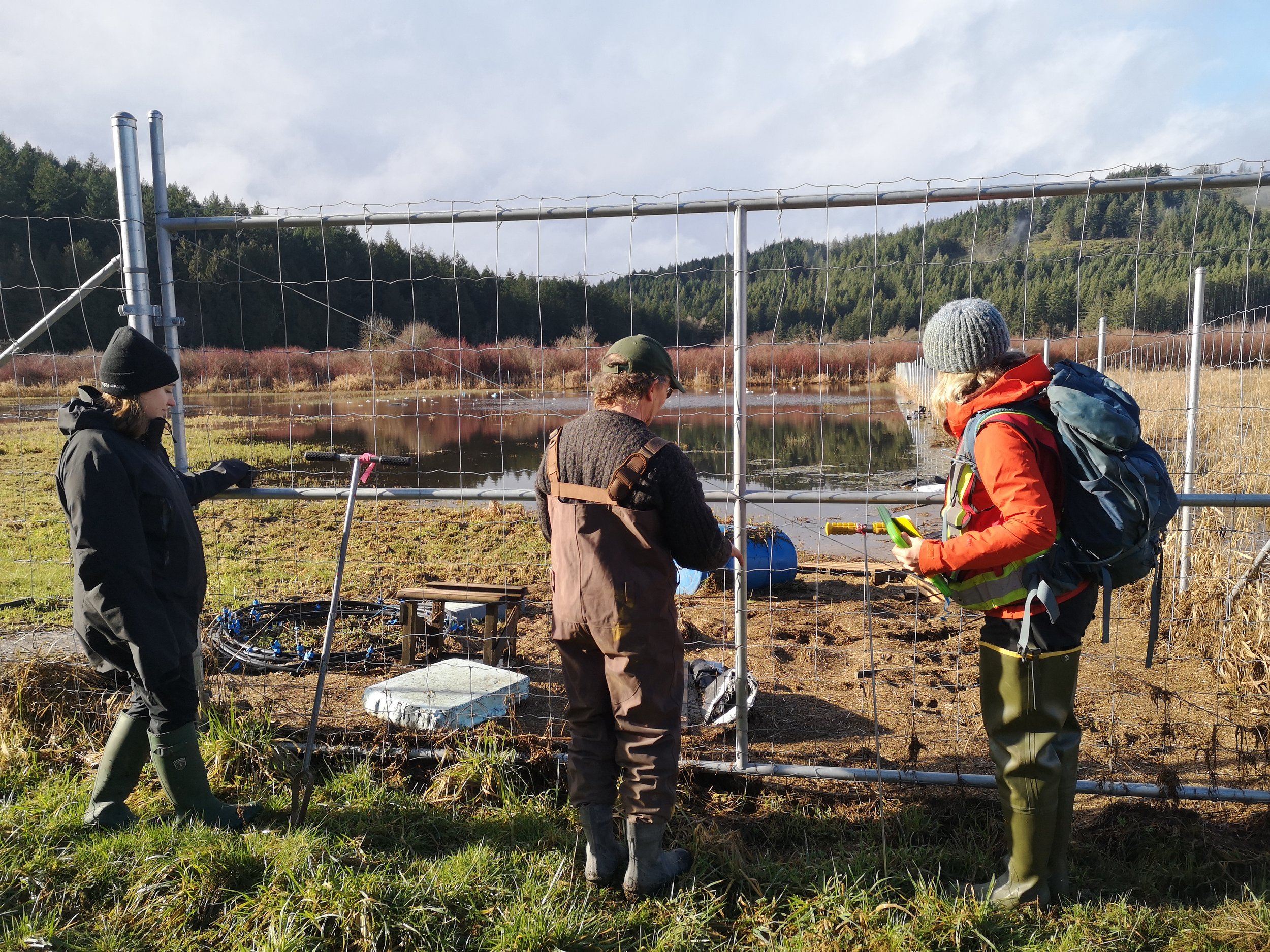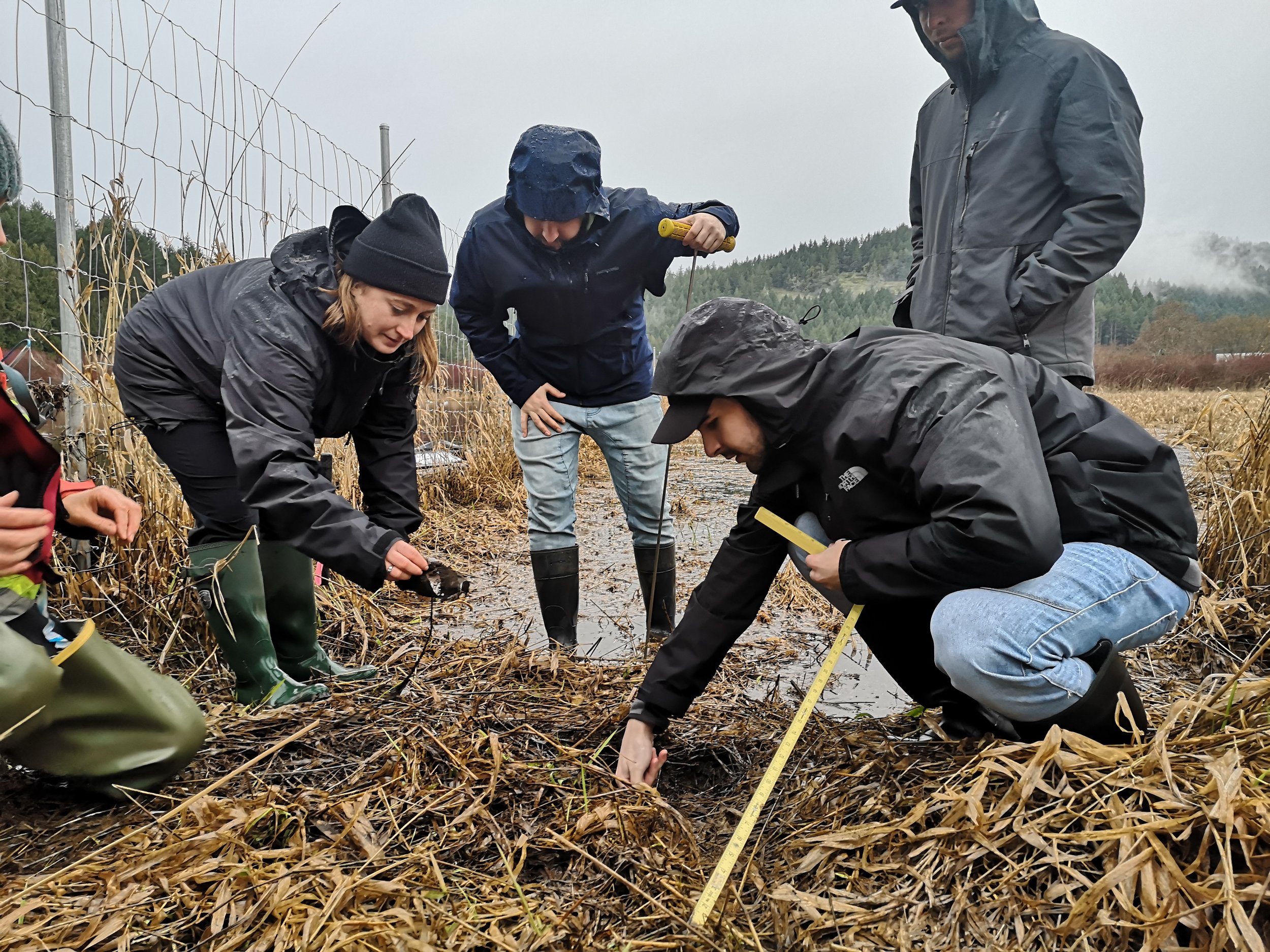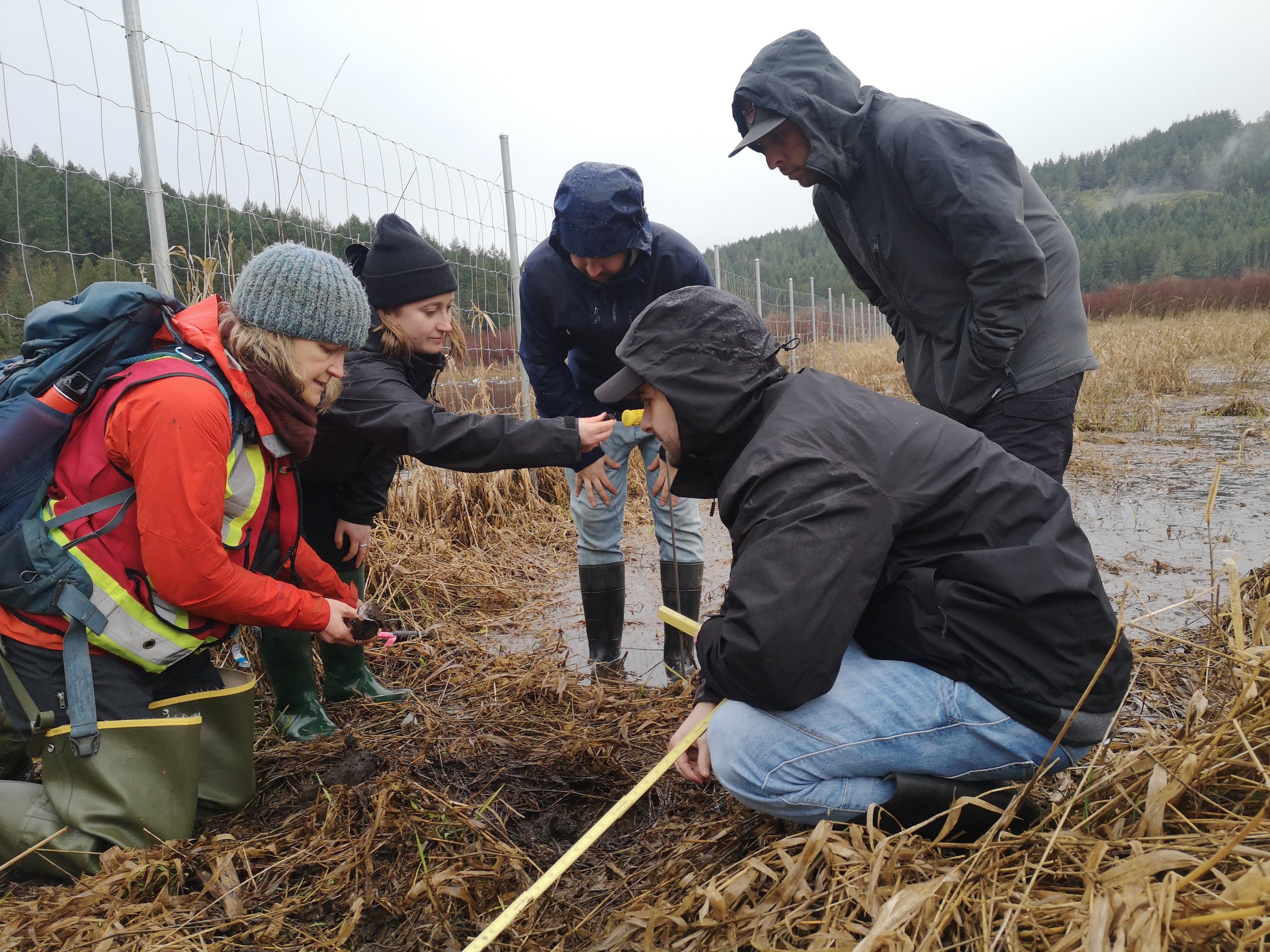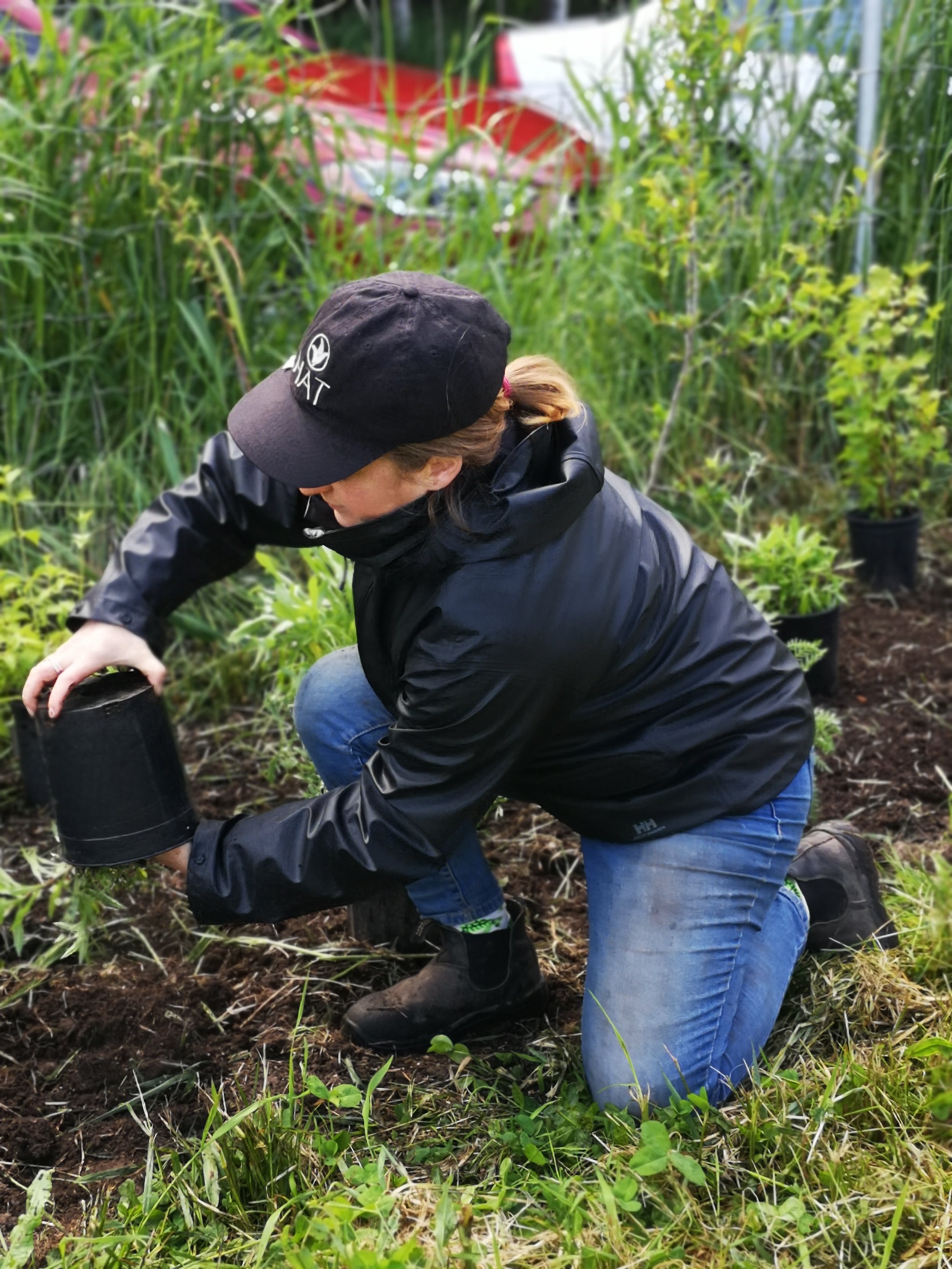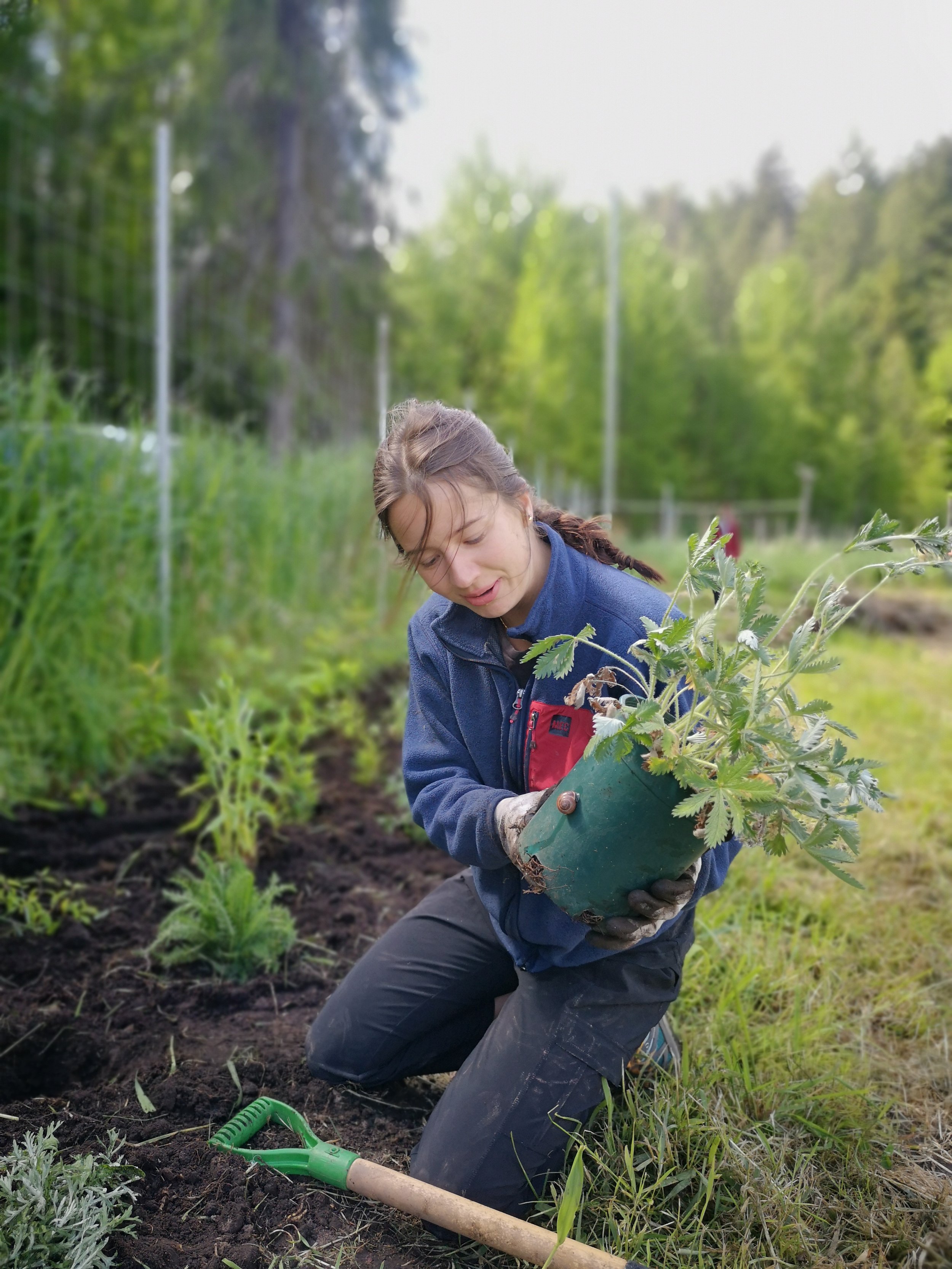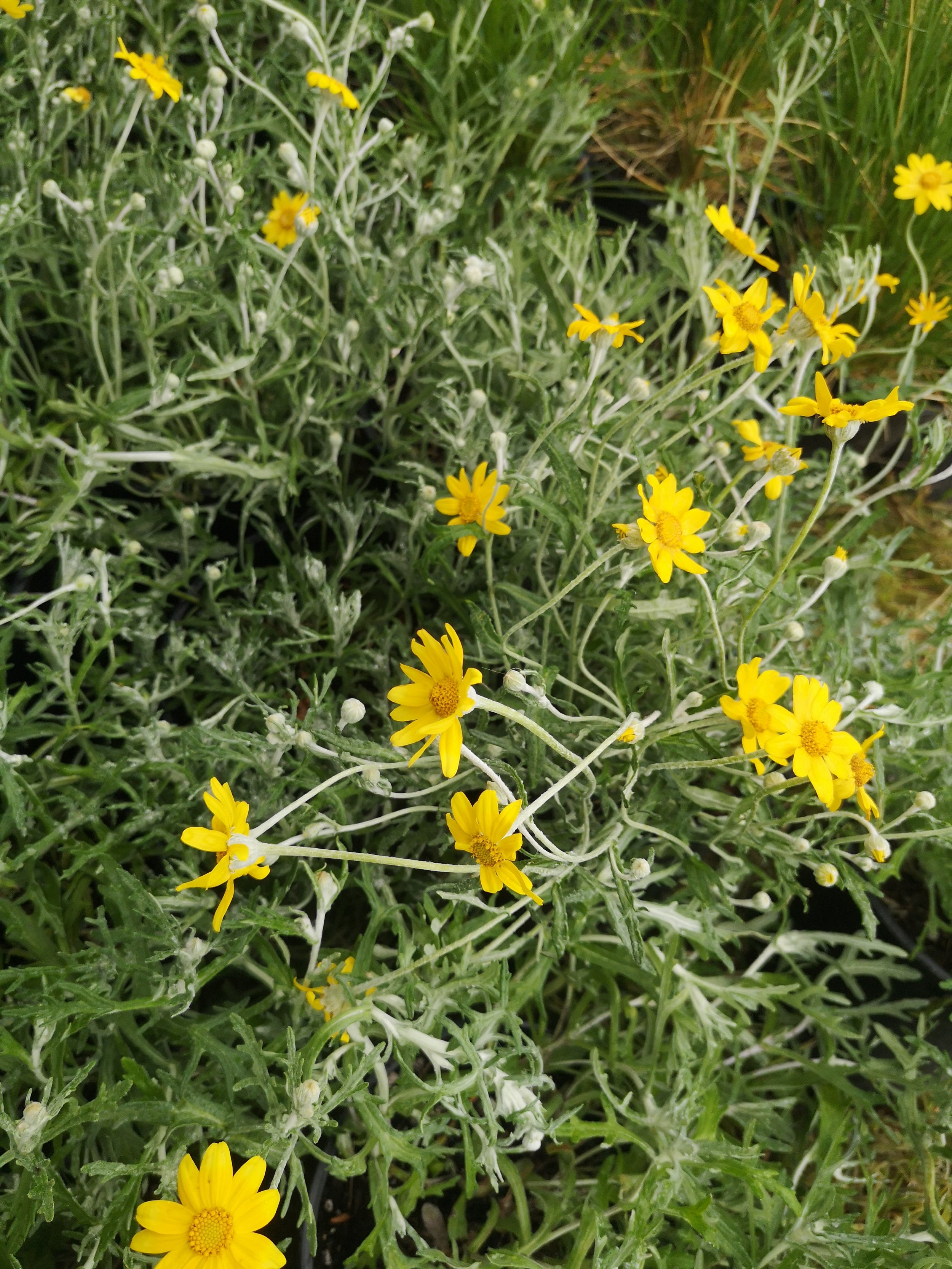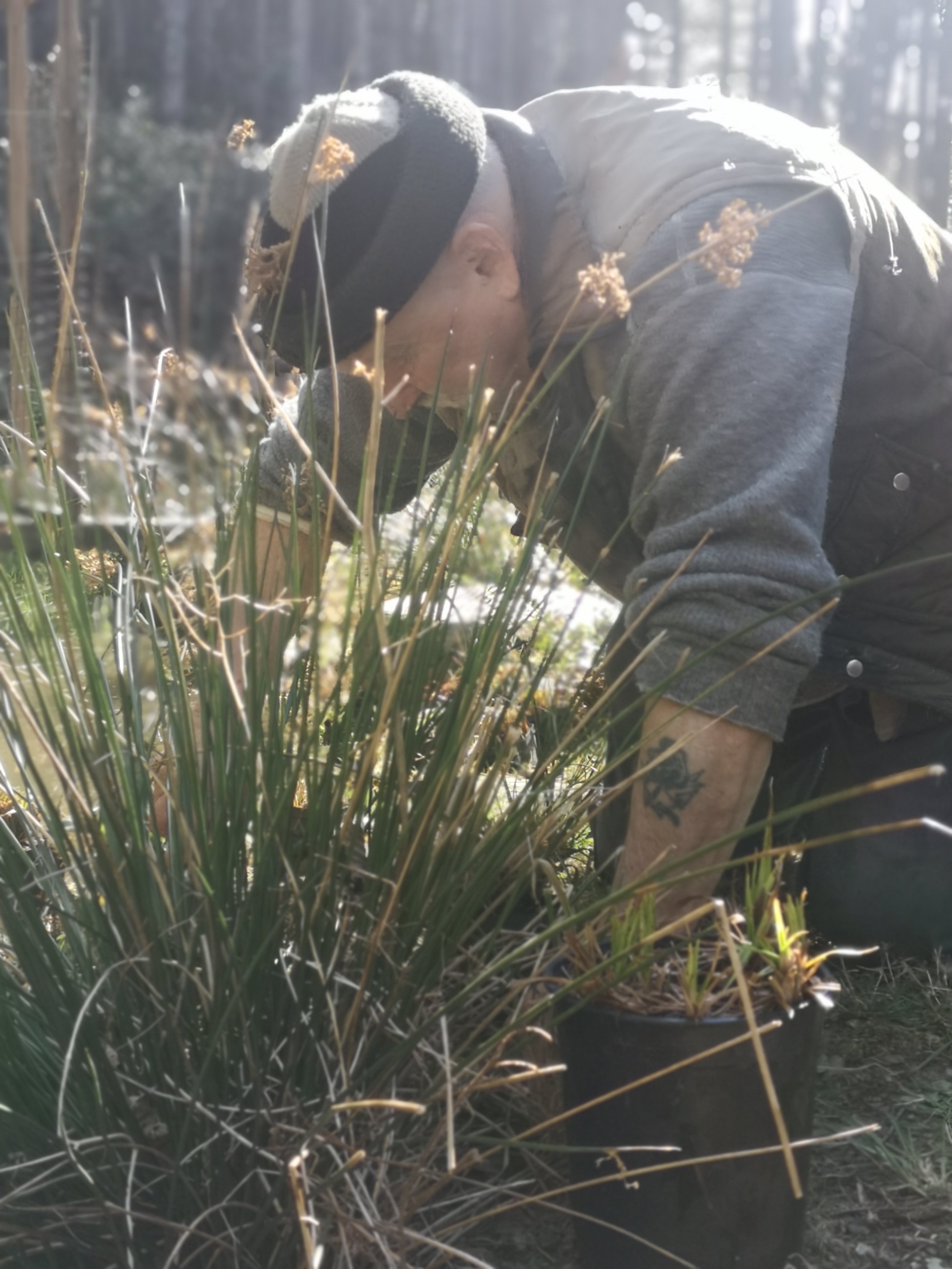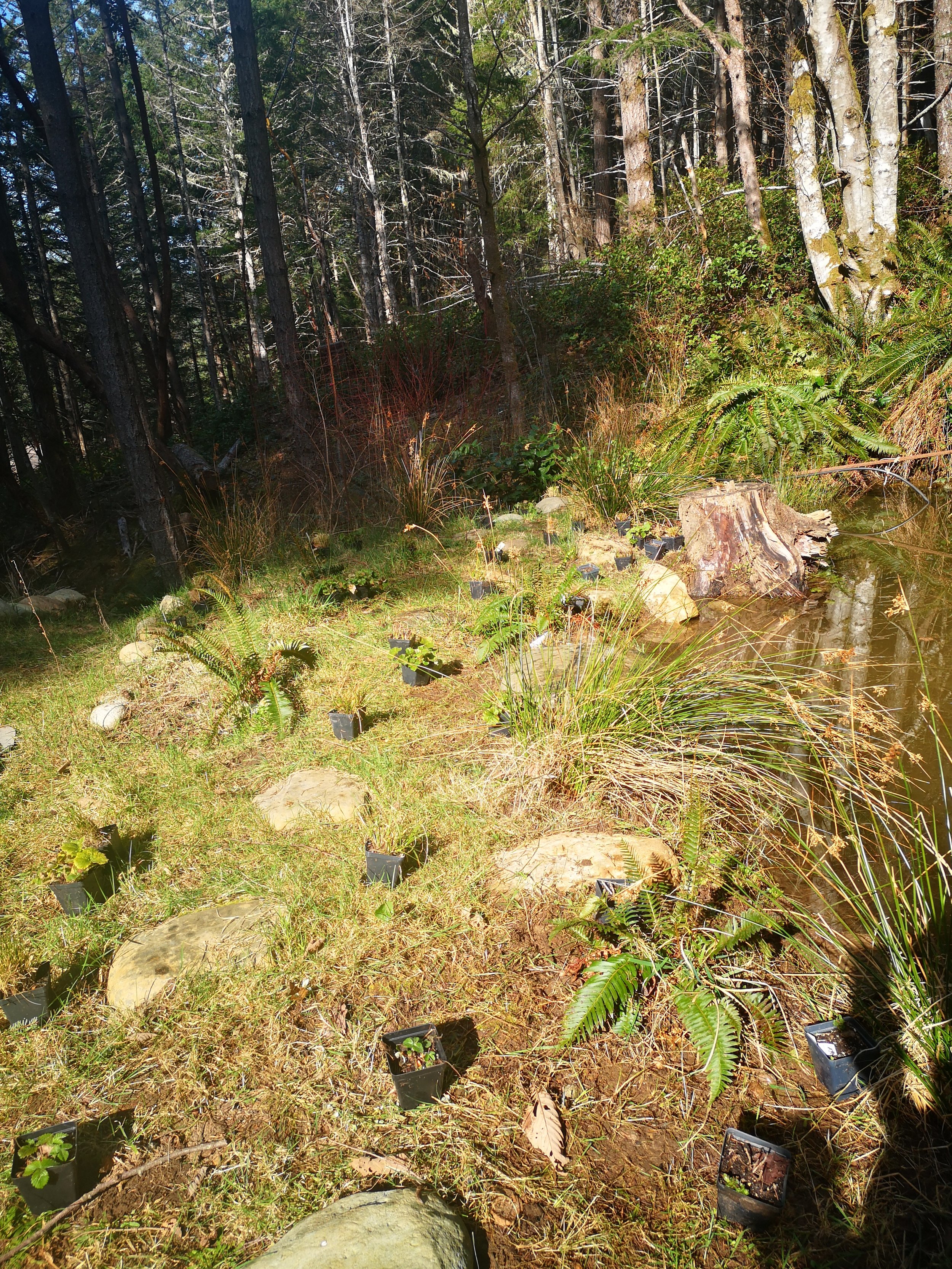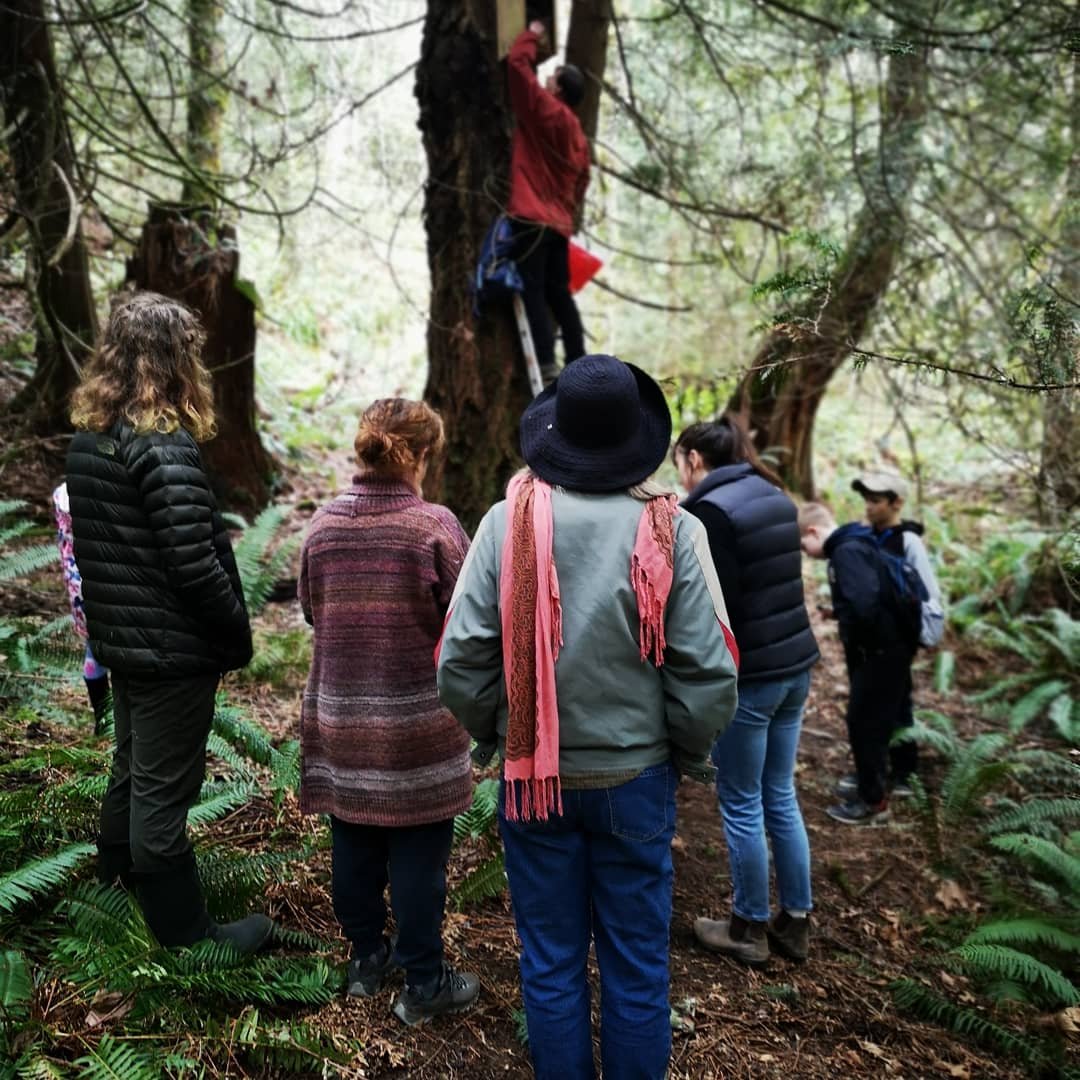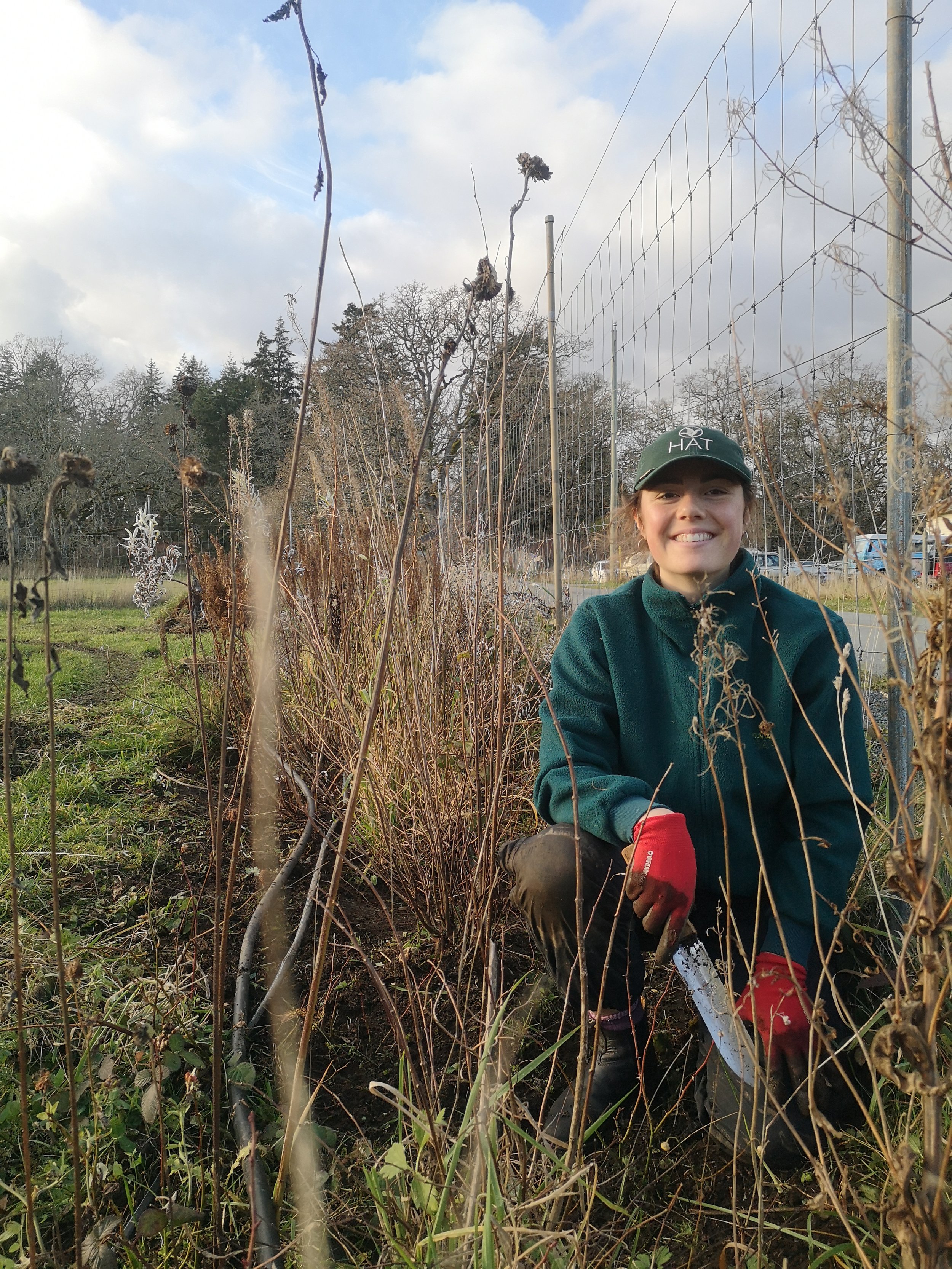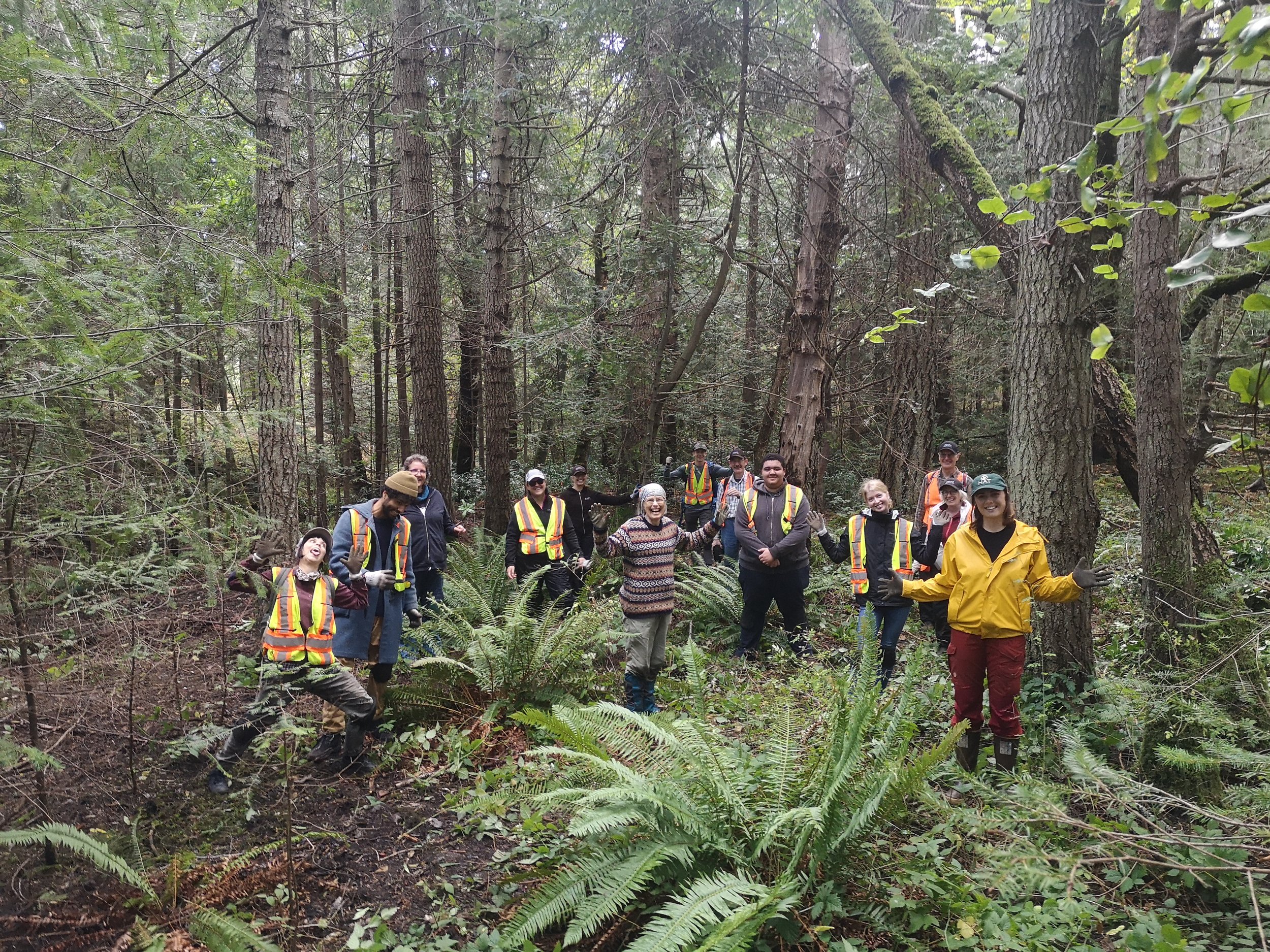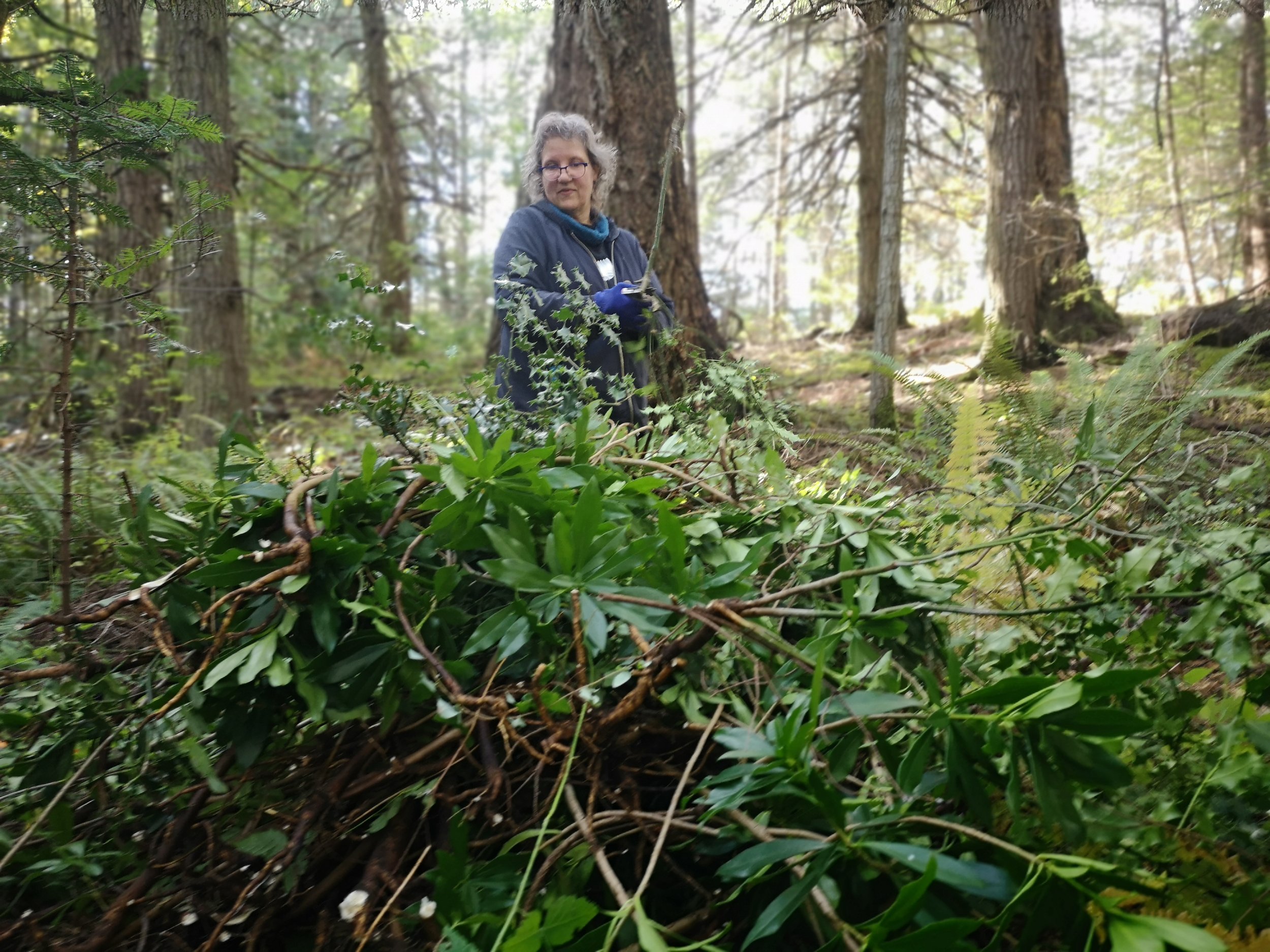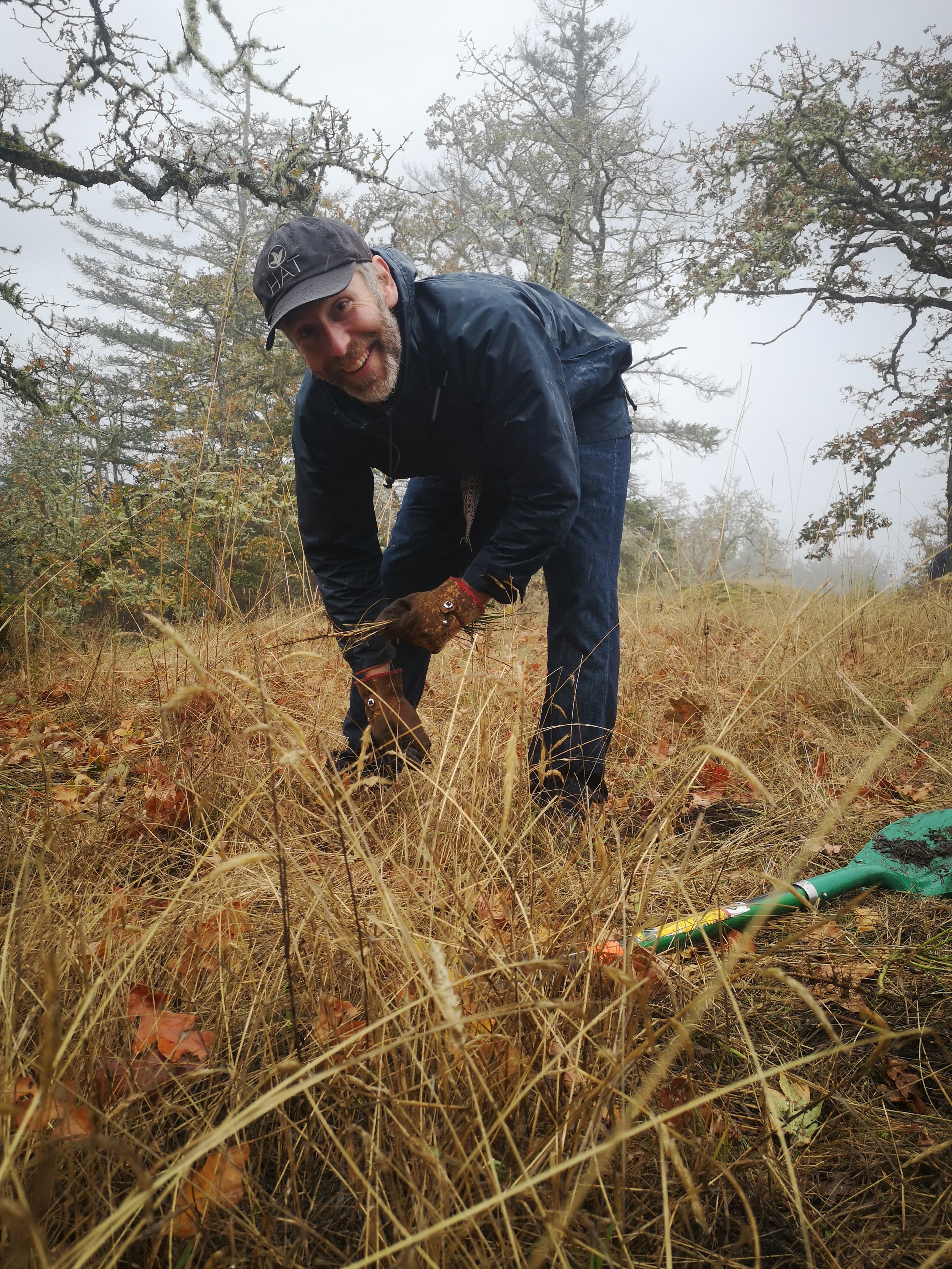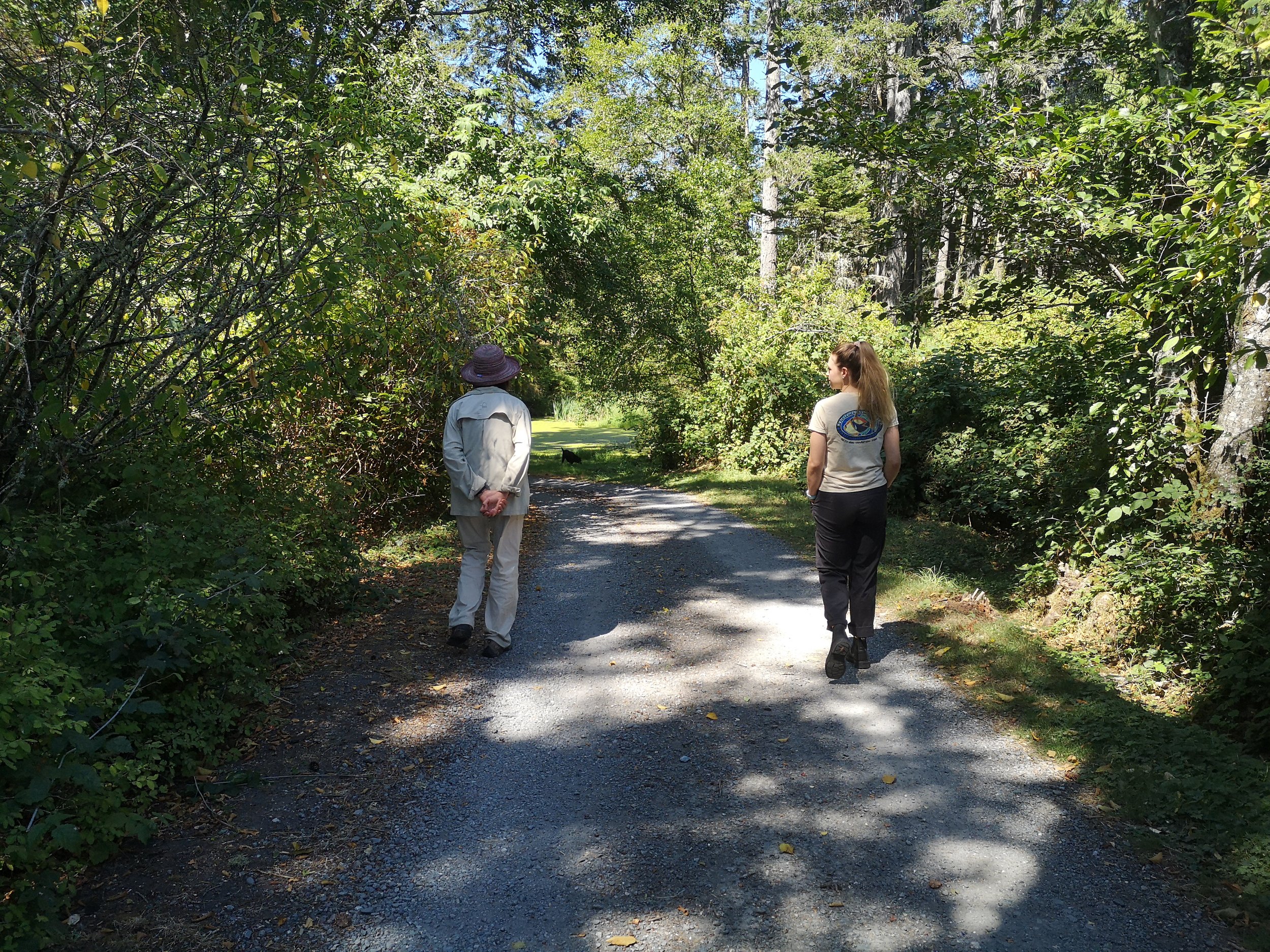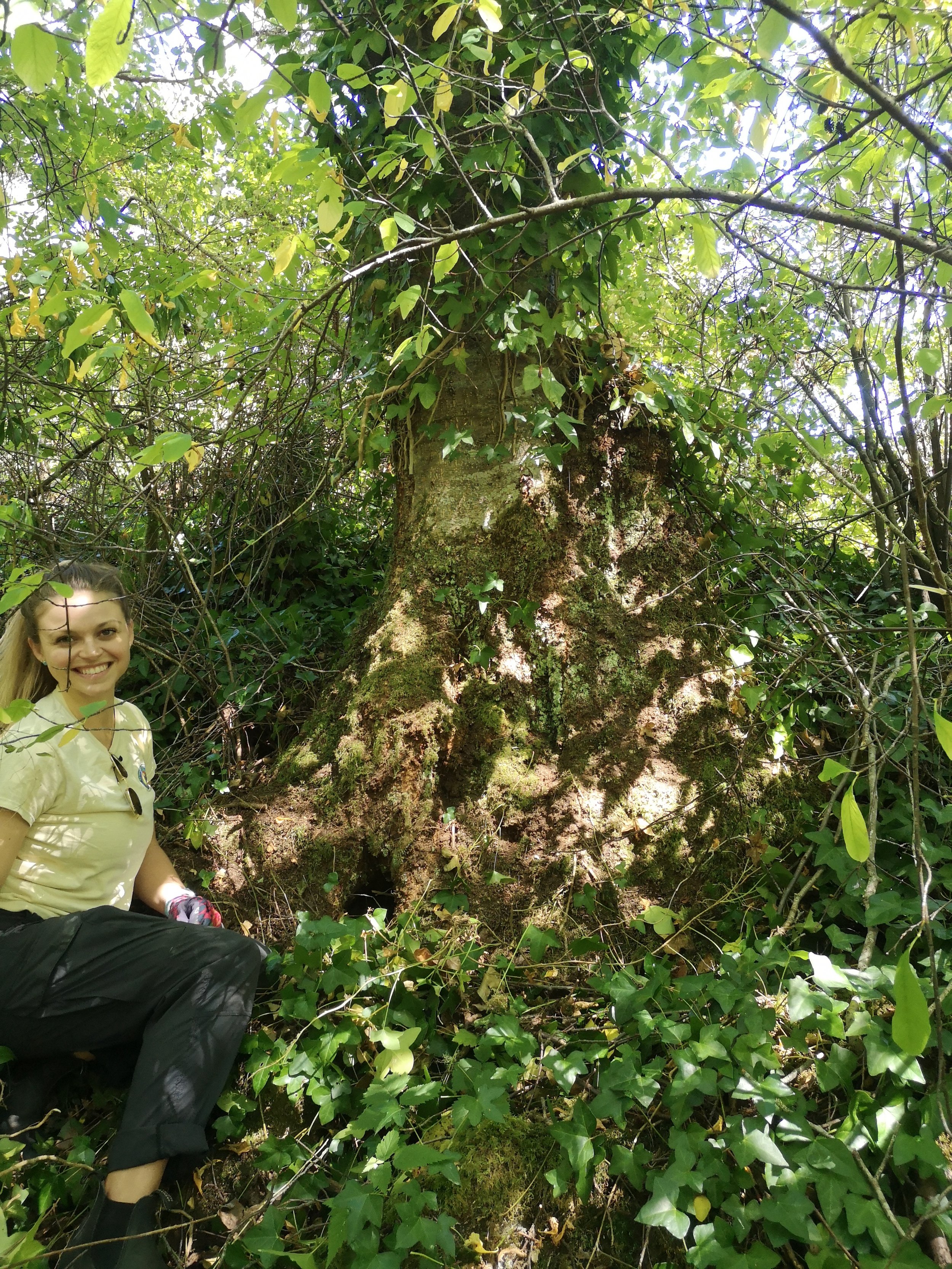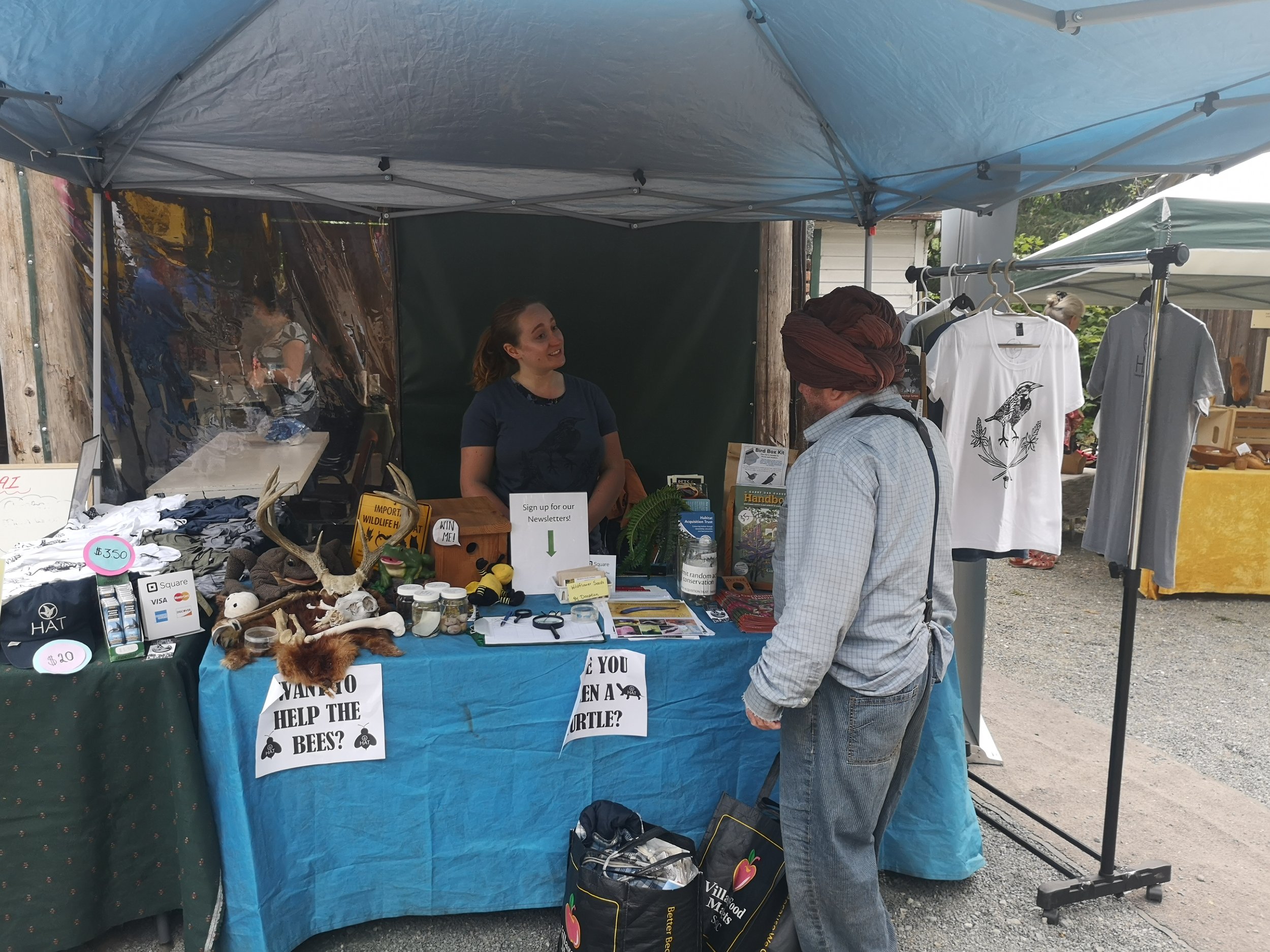Wildwood Wetlands & Wildlife Corridors Project
2018-2021 Good Neighbours Project Summary
In Fall 2018, HAT launched the Wildwood Wetlands & Wildlife Corridors Project with the goal of engaging with the community to find solutions to significant local conservation issues and to promote community appreciation of healthy natural habitats. HAT staff visited landowners in key areas to provide personalized landscape prescriptions on topics like soil erosion, pests, forest health, water quality, composting, and invasive species.
The conservation benefits of this project were directly linked to the primary operational outcome: to functionally connect habitats between existing protected lands utilizing HAT’s Good Neighbours Stewardship Program in order to conserve high biodiversity in the region. The outcome of the project was a corridor made up of 69 properties covering 1,647 acres that occur within the rare Coastal Douglas-fir Biogeoclimatic Subzone. These properties host ecosystems such as Douglas-fir-Salal forests and Douglas-fir—Shore pine—Arbutus woodlands.
During the lifetime of this project, a total of 4.5 acres underwent restoration, 2.5 of those acres were wetland habitats including riparian areas, wet meadows, floodplains, and streams. These wetland habitats benefit populations of elk, bear, cougar, salmon species, and waterfowl. More specifically, species observed during fieldwork include Purple Martin, Great Blue Heron, Painted Turtle, Red-legged Frog, and Rough-skinned Newt.
Due to COVID-19 in 2020, the project was extended by 1-year to spring 2021 to accommodate for provincial regulations. HAT extended the project’s focus geography in the third year of funding in response to indicated barriers to stewardship experienced by individuals and groups undertaking community-based wetland stewardship in the adjacent Bilston Creek, Metchosin Creek, and Firehall Creek Watersheds. This expansion allowed us to facilitate stewardship education for 12 additional landowners and improve the wildlife corridor connectivity east-west between Parry Bay and Sooke Basin, and up to Mount Wells Regional Park.
This extension included the Westshore area of Dewdney Flats, in which Lohbrunner Community Farm Co-operative and adjacent property were targeted for stewardship support, and 2.1 acres of degraded wetland habitat were identified as priority land for invasive species management and further restoration. Watch video of the work we accomplished at Lohbrunner Farm!
Thank you to all of our partners, funders, Habitat Stewards, landholders, and friends at the Sc’ianew First Nation for making this project a success!
Being a Good Neighbour to Nature.
This video was produced to highlight the WildwoodWetlands & Wildlife Corridors Good Neighbours Project
